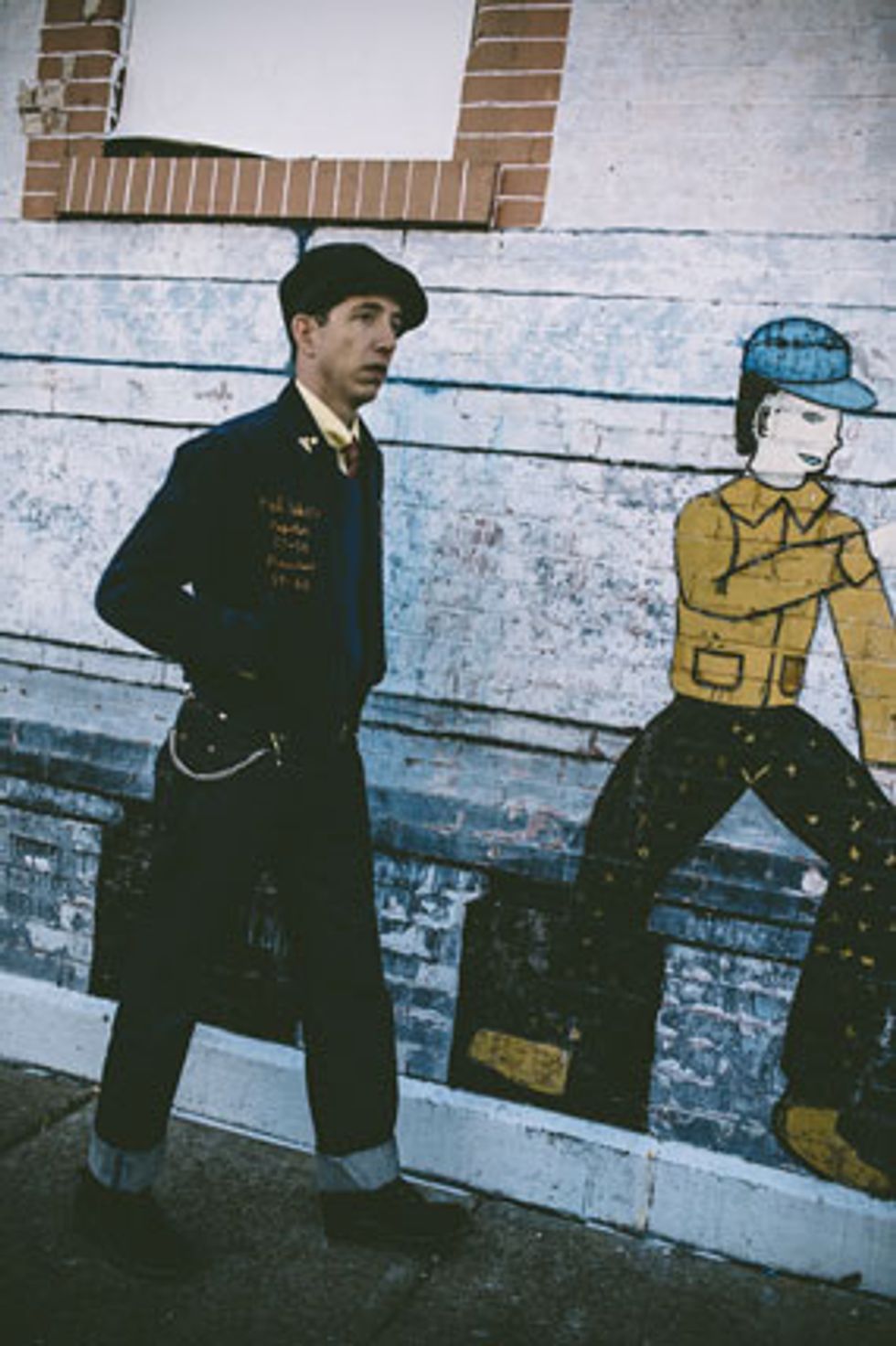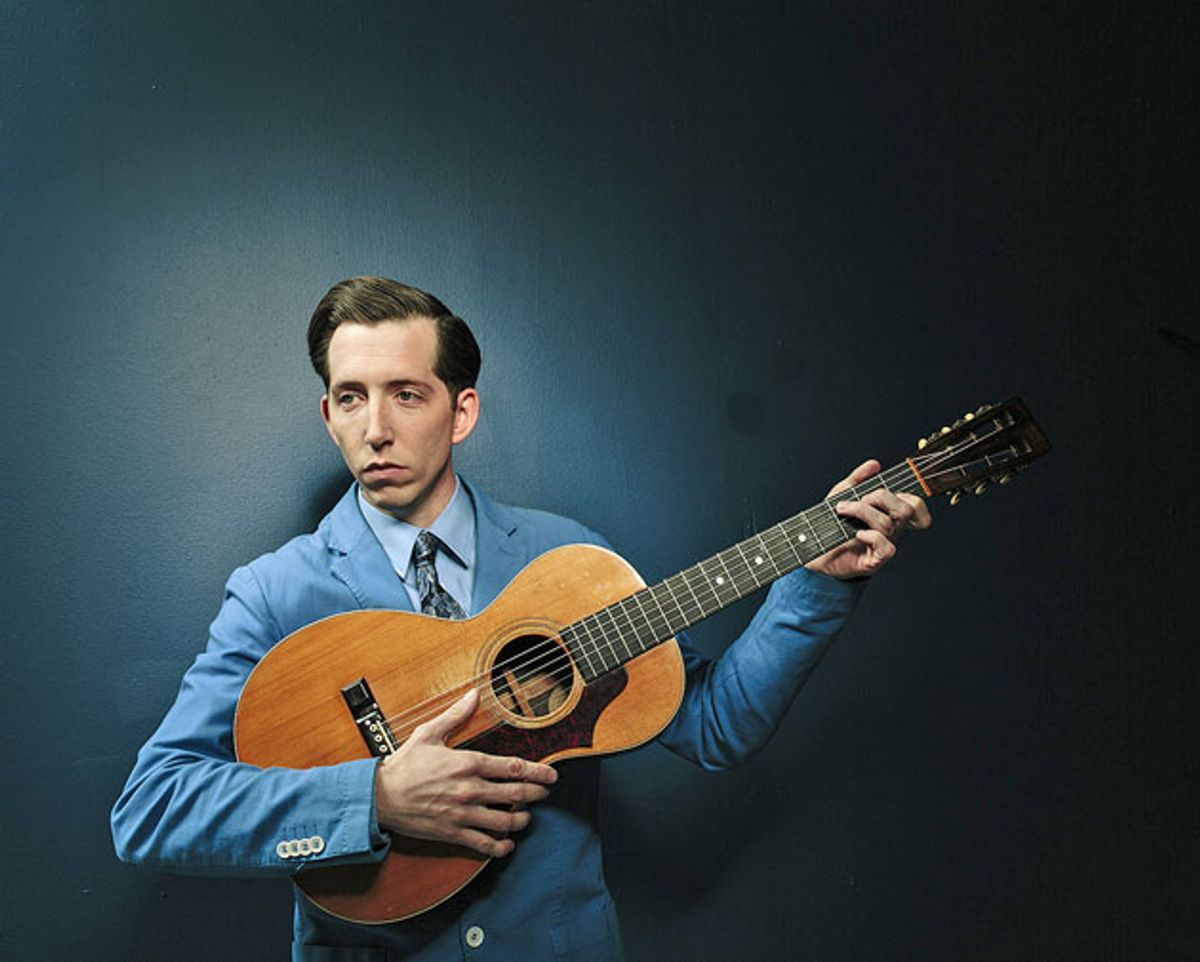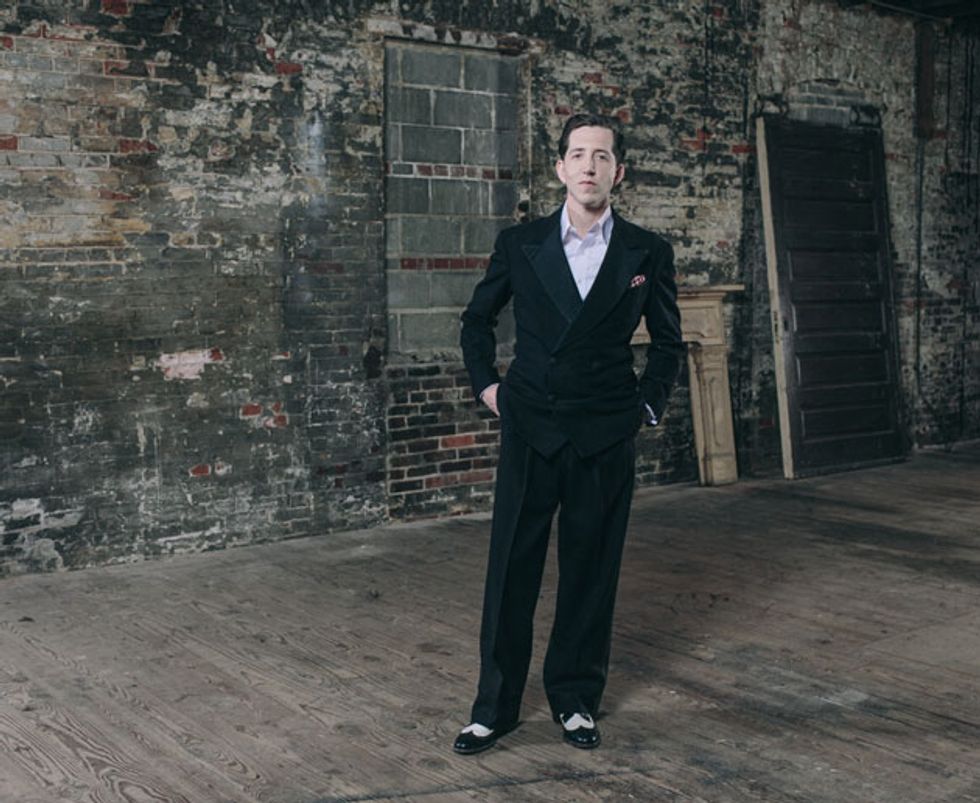Reviving the sound and spirit of mid-20th-century Americana.
Some doomsayers predict the guitar’s demise as younger musicians gravitate from traditional instruments toward electronic means of music production. But the wealth of youthful guitarists saying new things in older styles—with little electronic assistance—seems to indicate the contrary.
Consider 32-year-old Pokey LaFarge, whose given name is Andrew Heissler. (He received the nickname Pokey in childhood when his mother chided his leisureliness.) Since launching his recording career in 2006 with the album Marmalade, LaFarge has built a body of work that draws from such vintage American styles as country blues and swing-era jazz. His extensive touring in the U.S. and abroad have cemented his reputation as a magnetic live performer—and one who makes period-correct sartorial choices.
LaFarge sharpened his tribute to American music—especially the music of the Midwest—on the albums Beat, Move, and Shake (2008), Riverboat Soul (2010), and Middle of Everywhere (2011). His work earned the admiration of Jack White, another artist putting his own spin on Americana. White has championed LaFarge’s work on his own Third Man label, producing the 2011 EP Chittlin’ Cookin’ Time in Cheatham County and 2013’s Pokey LaFarge. This affiliation has been a boon to LaFarge’s career, as did his reading of the standard “Lovesick Blues” on the soundtrack of HBO’s Boardwalk Empire.
LaFarge’s latest album, Something in the Water (Rounder), is his most ambitious to date. Produced by Jimmy Sutton (known for his work with JD McPherson),the record augments LaFarge’s core ensemble with boisterous horns and walls of harmonized vocals. It’s all over the place stylistically—in a good way—from the updated ragtime of “Wanna Be Your Man” to the mysterious strains of “Goodbye, Barcelona.”
We caught LaFarge while he was touring Europe and discussed his robust old archtops, his musical identity, his friendship with Jack White, and how the Midwest has shaped his music.
How did you come to be such a purveyor of retro sounds?
I was exposed to much of the same music as my peers when I was growing up—the pop music of the ’90s. Then I wanted something different, so I started with classic rock and went backwards from there. One of my grandfathers played the banjo, and that got me into acoustic stringed instruments pretty early on.
You hitchhiked around the country when you were 17. What did you learn, musically and otherwise?
It benefited me mostly from a songwriting perspective—seeing all the things I saw, experiencing all the things I experienced, and remembering all of these things vividly. It all became good fodder for authentic songs.

Who are some of your most important influences?
In terms of guitarists, the most important ones have been Big Bill Broonzy, Ry Cooder, Leon Redbone, S.E. Rogie, Grady Martin, and Lefty Frizzell. On other instruments, there’s [banjoist] Bahamian Blind Blake, [player of self-made instruments] Danyel Waro, and [singer/yodeler] Jimmie Rodgers. The composers who influence me most are Bob Dylan, Jimmie Rodgers, Hank Williams, and Otis Redding.
How did you learn to play so many early American idioms? Are you self-taught?
I’m self-taught, yes. I started out listening to all of the early acoustic blues and jazz recordings I could get my hands on—this was before you could find anything you need on the Internet—and picking out just the chord progressions at first. Then I started writing my own pieces and working on solos.
How have you found your own identity in preserving vintage American music?
I suppose that’s part of who I am, but my identity isn’t necessarily tied to that. Preservation is one thing—I’m all for that—but what I do now is more rooted in creating contemporary things based on the world around me. That said, the influence of early American styles in my compositions is a form of preservation in its own way.
Talk about the influence of the American Midwest.
I was born and raised in the Midwest, and I write from a Midwestern perspective. I understand that perspective so much more after traveling for so long and getting out of the Midwest. I’m also influenced by early players in all styles who were from the Midwest, many of whom made their careers there. And the people playing on the new record are from Wisconsin, Chicago, and St. Louis—you can tell from the attitude in how they approach the music. Plus, I just relate to the strong Midwestern work ethic.
You not only play the music with stylistic rectitude—you dress the part. How do you choose your clothes and where do you find them?
I find them all over the place. I like to shop while I’m traveling and find things I may not be able to at home. Of course, I choose clothes based on how I look in them, but also on quality and ethics—handmade things, nothing made by sweatshop laborers. I buy both vintage clothes and things from quality contemporary outfitters.
How has your music evolved over the last few years?
At heart it’s essentially the same, but it’s been fleshed out to include bigger backing instrumentation. I have a drummer now, and there’s a stronger emphasis on rhythm and getting people grooving. I added a horn section a couple years ago, and we’re doing a lot more vocal harmonies. Overall, my music is bigger, grander, and more rock ’n’ roll.
What was your compositional process like for the new album?
Nothing too fancy: a lot of writing and rewriting at every turn. It was just write, write, write, throw it all away, start over, write, move on to pre-production, throw it away, write, and record.
The album has a collective feel. How much input did the other players have?
The horn arrangements were written by [cornetist] Andy Schumm. Jimmy [Sutton] and I did most of the other arranging, but we always accepted input from anyone involved. That’s probably what you’re responding to.
Your music obviously owes a lot to early jazz. Does improvisation factor into your playing on the record?
It’s very important—it’s all over the place! My motto is, follow the feeling and let it come out. You can’t compose feeling.
Gear
Guitars
1946 Epiphone Spartan with K&K pickup
1950 Gibson L-7 with McCarty pickup
2012 Hamm-tone archtop
1895 Lyon and Healy parlor
1956 Silvertone parlor
Amps
Magnatone Twilighter
Effects
None
Strings and Picks
D’Addario (assorted)
“Any heavy pick I can find”
How’d you get the great electric tones on the title track?
That’s all [co-guitarist] Joel Paterson, I’m afraid. He used a great 1945 Gibson L-7 with a Charlie Christian pickup for a really classic sound.
Why did you tune down a whole step for your interpretation of the pop standard “When Did You Leave Heaven?”
I simply wanted to be able to play a Bb chord—Bb is a horn-friendly key—but with a basic C-major shape for that nice, open sound.
Can you talk about your association with Jack White?
Jack heard one of my older tunes on the radio a few years back and took an interest. He invited me to record a seven-inch for his label, Third Man, and that led to signing a deal for the previous full-length [self-titled] I put out in 2013. He produced that record with me as well. He’s now a friend, too. He and I have bonded not just over music, but also through our love of baseball.
On the road you’ve been playing an Epiphone Spartan and a Gibson L-7. Is it difficult to maintain these old guitars, and do you worry about traveling with them?
Old fine-quality archtops are warhorses. I have yet to have any serious problems with either guitar on the road. I just detune them when I fly, keep them out of extreme temperatures, and take them inside every night from the touring vehicle so they don’t get stolen.
What do you think are the hallmarks of a great guitar?
Good wood and good craftsmanship—and being played, night after night. For at least 20 to 30 years.
YouTube It
Watch Pokey LaFarge and his ensemble play a great short set for NPR Music’s Tiny Desk Concert series.


